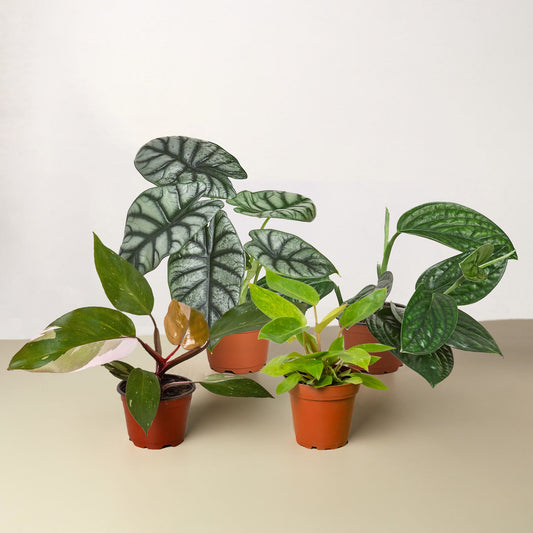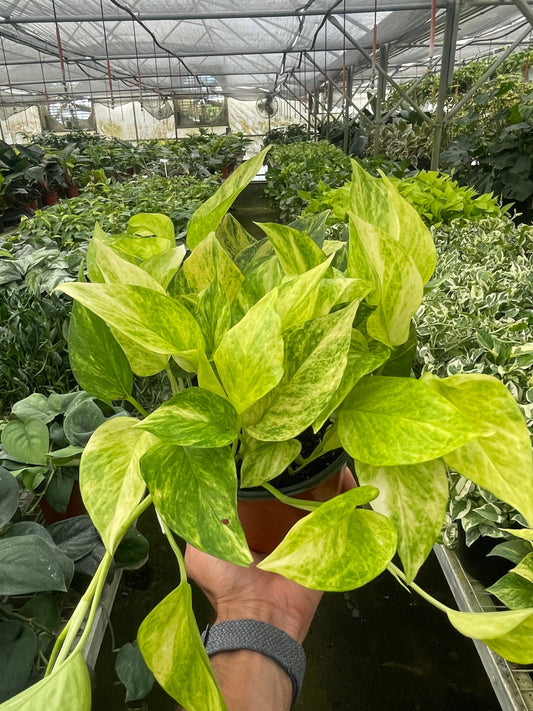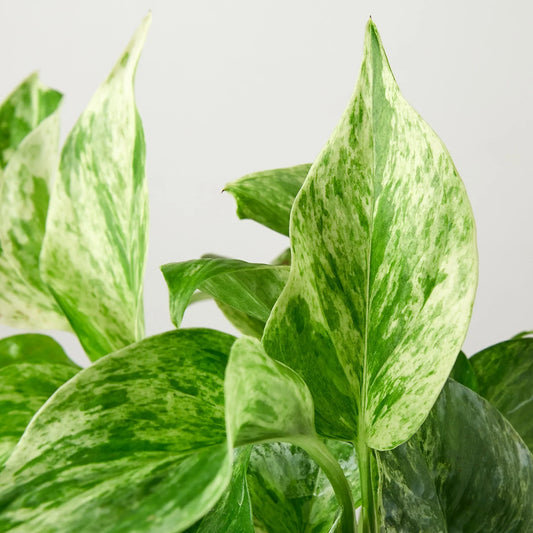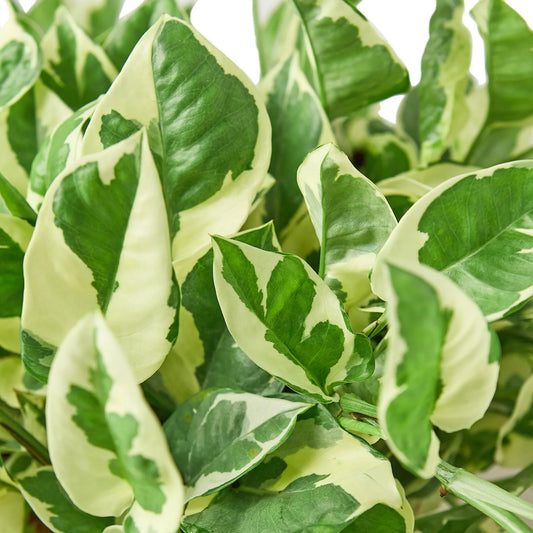English Ivy Roots: Everything You Need To Know
Cafe Planta Team
English ivy, with its elegant trailing vines and lush foliage, is a favorite among plant lovers. But what lies beneath the surface is just as fascinating—its roots. Whether you're looking to grow this classic plant indoors or out, understanding how its roots function can make all the difference in your gardening success.
In this article, we’ll dig into everything you need to know about English ivy roots. From their growth patterns and needs to how they can affect your home's interior design, we’ve got you covered. Let’s explore the ins and outs of caring for your ivy’s root system, ensuring it stays healthy and vibrant for years to come.
Understanding English Ivy Roots
English ivy roots are quite the marvel. They serve a few important functions that help the plant thrive. First off, they anchor the plant to the ground or any surface they climb, providing stability. This is why you'll often see ivy clinging to walls or trees with such determination. The roots act like little anchors, allowing the plant to scale surfaces with ease.
Additionally, the roots absorb water and nutrients from the soil. This is crucial because, like any other plant, English ivy needs both to grow and flourish. Interestingly, the roots are also capable of storing nutrients, which is especially useful during times when resources are scarce. This adaptability makes English ivy a robust plant that can survive in various conditions.
Moreover, English ivy has two types of roots: the soil roots and the aerial roots. Soil roots grow beneath the surface, doing the heavy lifting by absorbing nutrients and water. Aerial roots, on the other hand, grow above the ground and are primarily used for climbing and attaching to surfaces. This dual-root system is a unique feature of ivy, contributing to its versatility as both an indoor and outdoor plant.
Understanding how these roots work helps you provide the right care. For instance, you won't want to overwater your ivy as that could lead to root rot—a common issue when soil roots are left in soggy conditions. Knowing the balance of water and nutrients will keep your plant happy and healthy.
Optimal Soil Conditions for Healthy Roots
Getting the soil right is key to nurturing healthy English ivy roots. The soil acts as the foundation for your plant, supporting its growth above and below the surface. But what makes the soil 'right' for ivy? Let’s break it down.
English ivy prefers well-draining soil. This means the soil should be able to hold enough moisture to keep the plant hydrated but also drain excess water to prevent root rot. You can achieve such a balance by using a good-quality potting mix, often one formulated for houseplants or a mix that includes perlite or sand to improve drainage.
When planting ivy outdoors, aim for slightly acidic to neutral soil, with a pH level between 6.0 and 7.5. If you're unsure about your soil's pH, you can easily test it using a home testing kit. Adjust the pH by adding lime to raise it or sulfur to lower it, depending on your results.
Another tip is to ensure the soil is rich in organic matter. Compost or well-rotted manure are excellent additions, providing essential nutrients that feed the roots. These organic materials also enhance soil structure, promoting better drainage and root aeration.
Finally, remember that English ivy doesn’t like being constantly wet. If you notice water pooling at the bottom of your plant’s pot or around its base outside, it’s time to improve the drainage. Consider repotting with fresh soil or adjusting your watering routine to prevent the roots from sitting in water for too long.
Watering Tips for Strong Root Growth
Watering can be a bit of a Goldilocks scenario with English ivy—not too much, not too little, but just right. Striking the right balance ensures your ivy develops strong and healthy roots.
The general rule is to water your ivy when the top inch of soil feels dry. You can check this by sticking your finger into the soil. If it feels dry to the touch, it’s time to water. If it’s still moist, wait a few days and check again. This method prevents overwatering, which is the most common mistake that leads to root rot.
When watering, aim to soak the soil thoroughly. This encourages the roots to grow deeper in search of moisture, resulting in a more robust root system. Be sure the pot or planting area has good drainage, so any excess water can escape. For indoor ivy, use pots with drainage holes and a saucer to catch any runoff.
Interestingly enough, English ivy is more drought-tolerant than you might think. It can survive short periods without water, which means it won’t mind if you occasionally forget to water. However, consistently underwatering will stress the plant, leading to dry leaves and weak roots.
Remember to adjust your watering schedule with the seasons. Ivy will require more frequent watering during the growing season (spring and summer) and less during its dormant period (fall and winter). This seasonal adjustment helps mimic its natural environment and supports healthy root development year-round.
Repotting English Ivy: A Fresh Start for Roots
Repotting might sound daunting, but it’s actually a wonderful way to give your English ivy a fresh start. Over time, roots can outgrow their current pot, leading to a cramped environment that stifles growth. Repotting provides more space for roots to spread and access nutrients more effectively.
Typically, you should consider repotting your ivy every 1-2 years. Signs that your plant needs repotting include roots poking out of the drainage holes, water sitting on top of the soil without being absorbed, or noticeably slowed growth. If you spot these symptoms, it’s time to give your ivy a new home.
Here’s how to repot your English ivy:
- Select a new pot: Choose one that’s about 2 inches larger in diameter than the current pot. Ensure it has drainage holes.
- Prepare fresh soil: Use a well-draining potting mix rich in organic matter.
- Remove the plant: Gently loosen the soil around the edges and carefully lift the ivy out of its old pot.
- Check the roots: Trim any that are damaged or excessively long. This encourages fresh growth.
- Plant in the new pot: Place the ivy in its new pot, adding soil around it. Press the soil down lightly to eliminate air pockets.
- Water thoroughly: Give the newly potted plant a good soak, allowing excess water to drain away.
Repotting not only revitalizes the roots but also refreshes the overall look of your ivy. It’s like giving your plant a little makeover, setting it up for continued healthy growth and vibrancy.
Recognizing and Addressing Root Problems
Even the most attentive plant parents can face root problems from time to time. Fortunately, recognizing these issues early on can prevent more significant problems down the line.
The most common root issue with English ivy is root rot, typically caused by overwatering or poor drainage. Symptoms include yellowing leaves, wilting despite moist soil, and a sour or musty smell emanating from the soil. If you suspect root rot, act quickly by reducing watering and improving drainage.
To inspect the roots, gently remove the plant from its pot. Healthy roots are firm and white, while rotting roots appear brown or black and feel mushy. Trim away any affected roots with sterilized scissors, and repot the plant with fresh soil to prevent further spread.
Another issue could be root binding, where roots become tangled and encircle the pot, restricting growth. This is easily fixed by repotting as we discussed earlier, ensuring the roots have more space to grow freely.
Lastly, pests like fungus gnats can occasionally target the roots. These tiny insects are more of a nuisance than a serious threat, but they can affect root health. Use sticky traps to catch adult gnats and allow the soil to dry out between waterings to reduce the population.
Keeping an eye on your ivy’s roots and addressing any issues promptly will ensure your plant continues to thrive. Remember, a healthy root system is the foundation for a robust and beautiful English ivy.
English Ivy Roots in Interior Design
Beyond their functional role, English ivy roots can add a unique touch to your home’s interior design. Ivy is often chosen for its aesthetic appeal and versatility, making it a fantastic option for creative plant displays.
One popular design choice is to use English ivy in hanging planters. The trailing vines create a beautiful cascade of greenery, and the roots are hidden away in stylish pots that complement your home’s decor. Hanging ivy can soften the hard lines of furniture and add a touch of nature to your living space.
Additionally, you can train ivy to grow along trellises or frames, creating living art pieces that can stand on their own or be mounted on walls. This not only showcases the plant’s beauty but also highlights the root’s ability to adapt and support the vine's growth in various configurations.
Ivy is also great for indoor topiaries, where the plant is shaped into whimsical forms. The roots are key here as they provide the necessary support and nourishment for these intricate designs to thrive.
When incorporating ivy into your home, consider using decorative pots or planters that reflect your personal style. Whether it’s a rustic terracotta pot or a sleek modern planter, the choice of container can enhance the overall look and feel of the display.
Incorporating English ivy into your home’s interior design not only adds beauty but also brings a sense of tranquility and connection to nature. It’s a simple yet effective way to breathe life into your living space.
Outdoor Landscaping with English Ivy
English ivy isn’t just for indoor beauty—it can also make a stunning addition to your outdoor landscaping. With its robust roots and versatile growth habits, ivy can be used in a variety of creative ways to enhance your garden or exterior spaces.
One common use of English ivy outdoors is as ground cover. The roots spread horizontally, creating a dense mat that can quickly fill in bare spots and suppress weeds. This makes ivy an excellent choice for covering large areas with minimal maintenance.
For those looking to add vertical interest, ivy can be trained to climb walls, fences, or trellises. Its aerial roots stick to surfaces, allowing the plant to ascend with ease. This can add a lush, green backdrop to your garden or create natural privacy screens.
Ivy can also be used to highlight specific garden features. Try planting it around the base of trees or sculptures to create a natural frame that draws the eye. The contrast between the ivy and these elements can enhance your garden's overall visual appeal.
However, it’s important to note that while ivy can be a beautiful addition, it can also become invasive if not managed properly. Regular trimming and monitoring will keep it under control and prevent it from overtaking other plants.
With thoughtful planning and care, English ivy can be a versatile and attractive component of your outdoor landscaping, adding a touch of elegance and greenery to your garden.
Propagation: Growing New English Ivy from Cuttings
Propagating English ivy is a rewarding way to expand your plant collection or share with friends. Thankfully, it’s quite simple to grow new ivy plants from cuttings, and the process is both fascinating and fun.
Here’s how to propagate English ivy from cuttings:
- Select a healthy vine: Choose a section of vine with several leaves and healthy growth.
- Make the cut: Using clean scissors, cut a 4-6 inch piece just below a leaf node (where the leaf joins the stem).
- Remove lower leaves: Strip off the leaves from the bottom half of the cutting to expose the nodes.
- Root in water or soil: Place the cutting in a glass of water or insert it into a pot of moist soil, ensuring the nodes are submerged or buried.
- Wait for roots to develop: Keep the cutting in a bright, indirect light and watch for roots to form in a few weeks.
- Transplant: Once roots are 1-2 inches long, transplant the cutting into a pot with well-draining soil.
Propagation not only gives you new plants but also helps you practice your gardening skills. It’s a delightful way to engage with your plants, and watching new roots form is always exciting.
Plus, with your new ivy plants, you can experiment with different placements in your home or garden, adding more greenery and charm to your surroundings. Whether you’re gifting them to others or keeping them for yourself, propagated ivy plants are a testament to your growing plant care expertise.
Seasonal Care for English Ivy
Caring for English ivy requires some seasonal adjustments to ensure it thrives throughout the year. Understanding how the seasons affect your ivy will help you provide the best care possible.
During the growing season (spring and summer), ivy will need more frequent watering and fertilization. Use a balanced, water-soluble fertilizer every 4-6 weeks to provide essential nutrients that support vigorous growth. Keep an eye on the soil moisture and adjust your watering schedule as needed, ensuring the soil remains consistently moist but not soggy.
In the fall and winter, English ivy enters a dormant phase. During this time, reduce watering and stop fertilizing. The plant’s growth will slow, and it will require less water and nutrients. Allow the soil to dry out slightly between waterings, but don’t let it become bone dry.
Seasonal changes also affect light conditions. In the winter, when daylight is limited, try to provide your ivy with as much natural light as possible. Consider moving it closer to a window or using grow lights to supplement if needed.
Outdoor ivy will need some protection during harsh winters, especially in colder climates. Mulching around the base can help insulate the roots, safeguarding them from extreme cold and fluctuating temperatures.
By aligning your care routine with the natural rhythms of the seasons, you’ll help your English ivy flourish all year long, keeping it healthy and vibrant through each phase of its growth cycle.
Final Thoughts
English ivy roots are fundamental to the plant's success, whether you're growing it indoors or out. From understanding its root structure to providing the right soil and care, you now have a better grasp of how to nurture this beloved plant. With proper attention, English ivy can thrive, adding beauty and greenery to any space.
At Cafe Planta, we're passionate about helping you care for your plants. If you have any questions, feel free to email us or reach out on Instagram. We believe that plants bring people together, and we're here to help you create a beautiful, thriving plant collection in your home.



















